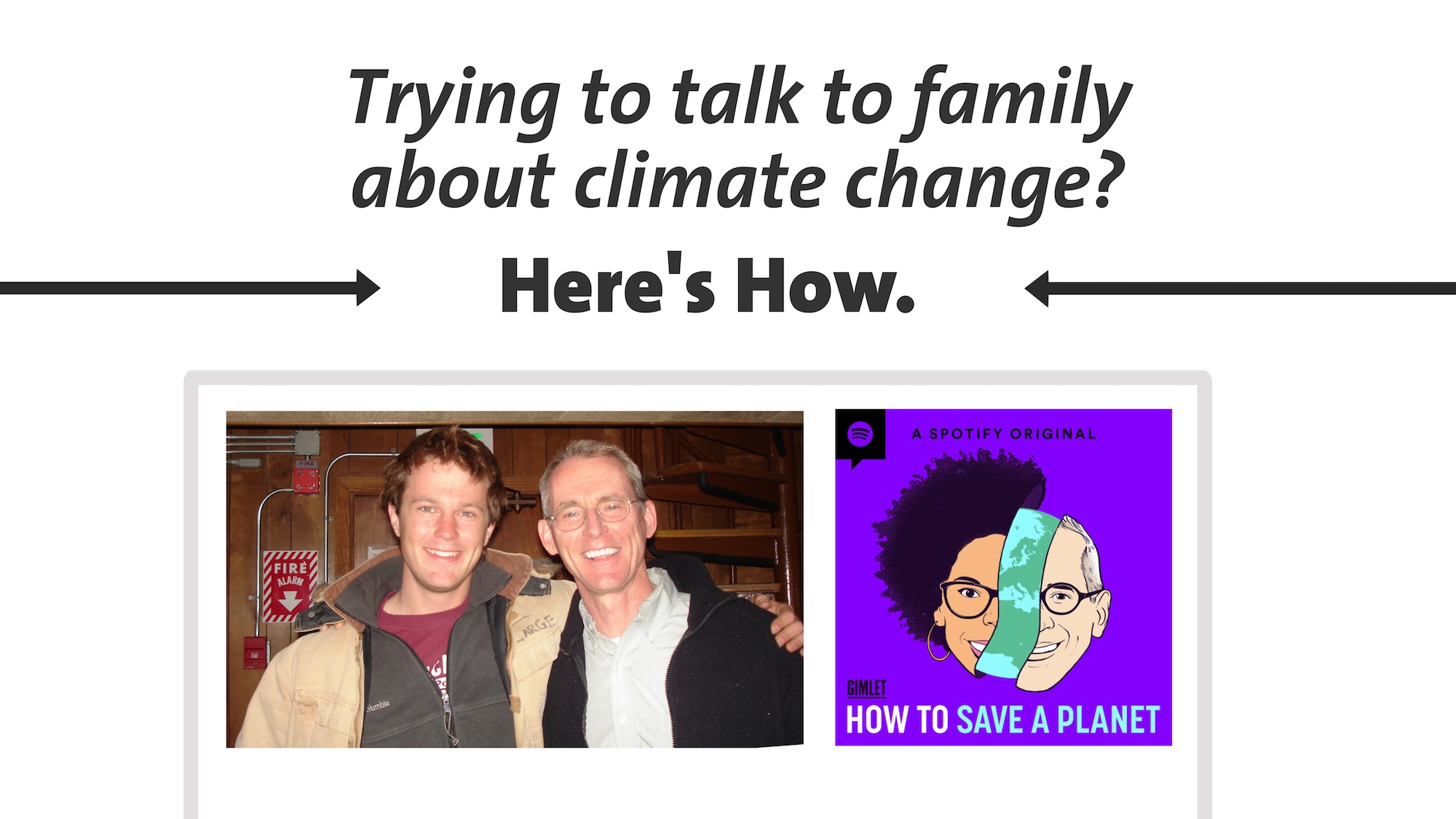
Before convening for Thanksgiving dinner or over Zoom, we encourage our community to listen to the latest episode of the “How to Save a Planet” podcast. Their episode this week is titled Trying to Talk to Family about Climate Change? Here’s How and it features our Executive Director Bob Inglis and his son Rob, who share their personal story and how Rob influenced his dad’s thinking on climate change.
(Rob: thank you!)
It’s important to talk about climate change. But how do you talk about it with friends and family who aren’t convinced it’s real, or don’t think we can do anything about it? Aside from Bob and Rob’s story, this episode offers step-by-step tips (extracted below) from an expert on how to have a conversation where both sides actually hear each other.
Step 1 – Set realistic expectations for yourself!
Your initial goal should be to lower the temperature around this issue. Even if you just succeed in attempting to talk to them one on one, or expressing a DESIRE to do so, that’s an important step forward! Do NOT set yourself an expectation that you will change how they feel about climate all in one go!
Step 2 – Find a buddy!
Find someone you trust and feel comfortable with who’s down to be your support before and after having a challenging conversation with a friend or family member. Talk to them about what your fears are, and name some goals for what you’re doing to make this one go different.
Step 3 – Find a quiet moment to talk to your family member
Ideally do it when you can be one on one, NOT surrounded by the whole family at the actual Thanksgiving table! Be direct and say “Hey, I’d love to find a time to talk more about this.” So that they have a chance to opt in.
Step 4 – Listen!
When the time comes to talk, start by letting them know that you really want to understand how they feel about climate change. Listen, and ask follow up questions “Tell me more? Why do you feel that way?” But importantly DON’T RESPOND. Don’t engage with the parts that you disagree with. Just give them a chance to talk it out and be heard, you want to let them get the crux of their feelings on the subject off their chest.
Step 5 – Acknowledge that you disagree
Let them know what you think. For example “Got it. So you’re probably not surprised to hear it but I think climate change is real and human-caused.” But then most importantly, say “BUT I really want to find a way to talk to you about it openly, and better understand what each other thinks, even if we don’t agree.” In other words, name the elephant in the room – that you disagree – and name it without being upset about it!
Step 6 – Make it personal.
Turn the conversation away from dueling facts, and towards life and experiences. For example, I might share a story about my friend Laurel, whose sister lost her home to a wildfire in Paradise, CA, and how hearing her story was the first time I felt a knot of fear in my stomach, that my own community could be in danger of the same thing. The key here is to share vulnerably, and then talk about how it made you FEEL. And then (most importantly) invite them to do the same – bring emotion explicitly into the conversation.
Maybe try it out this socially-distanced Thanksgiving!
